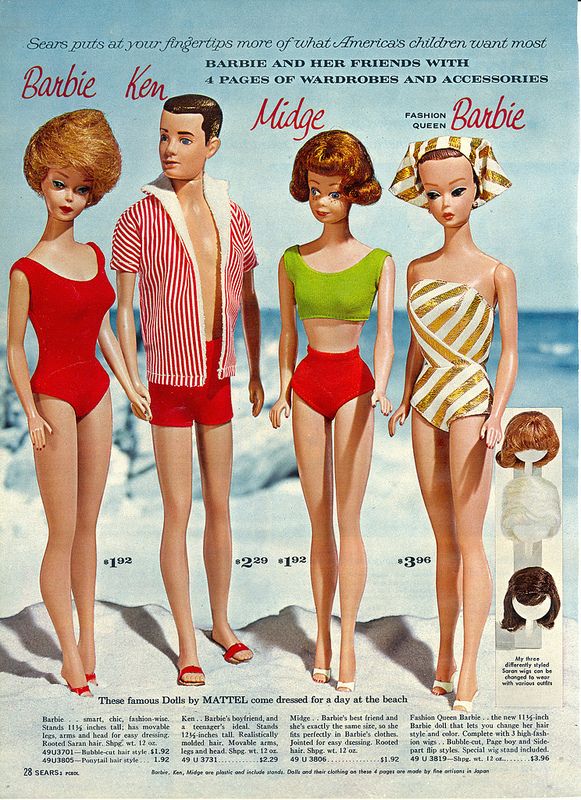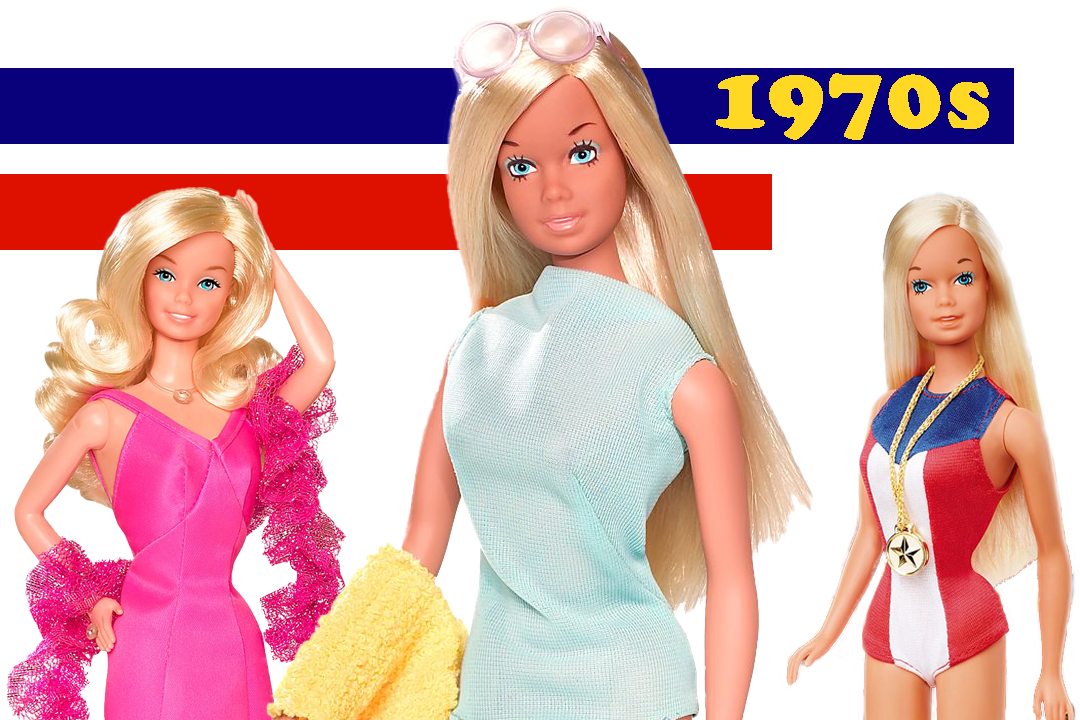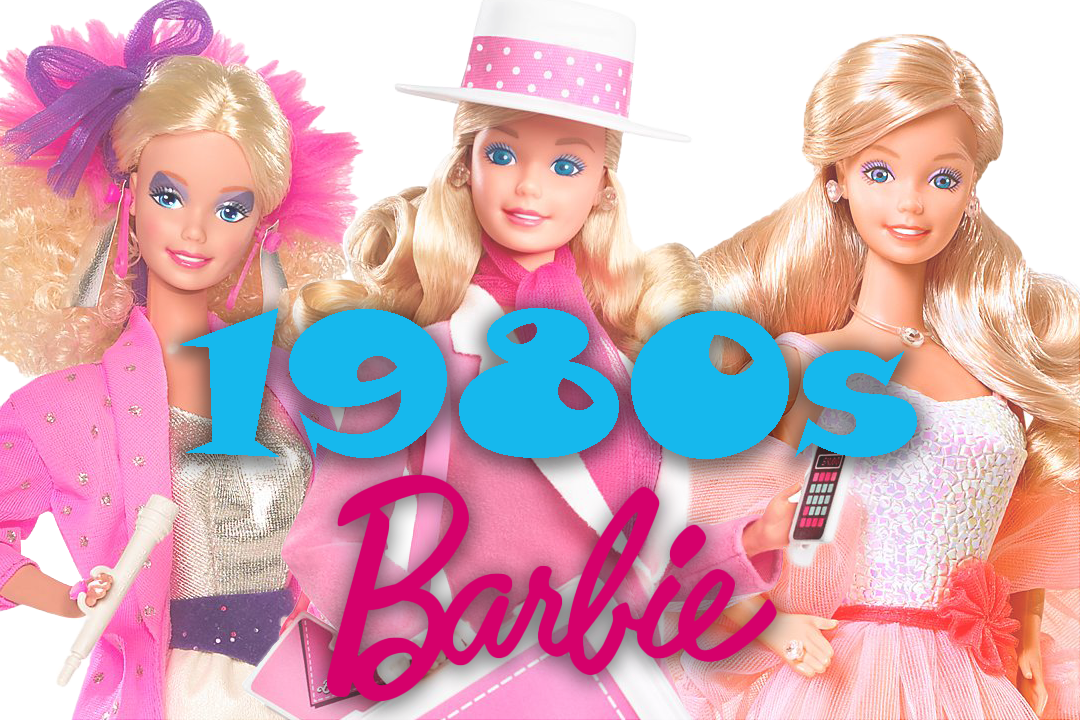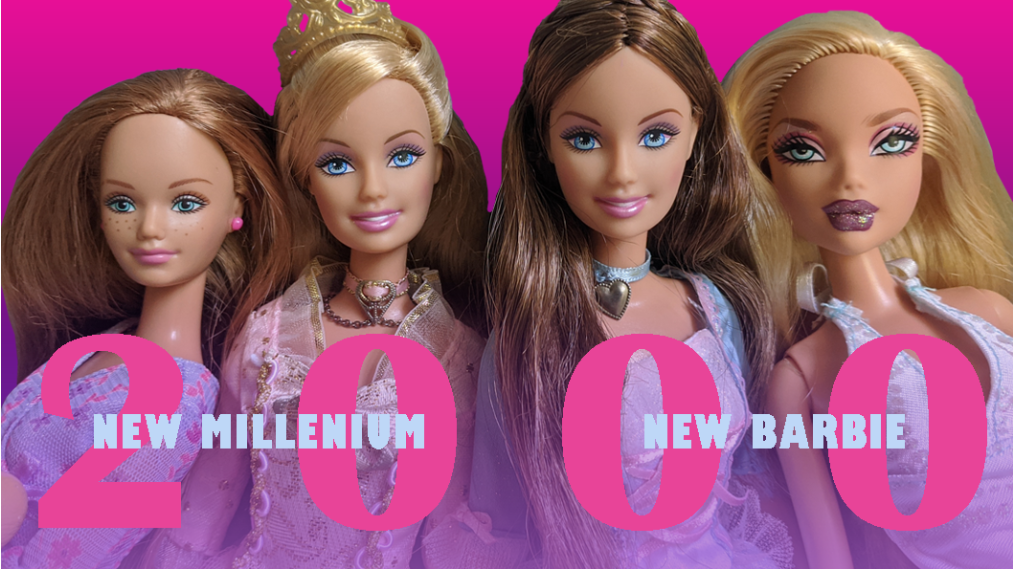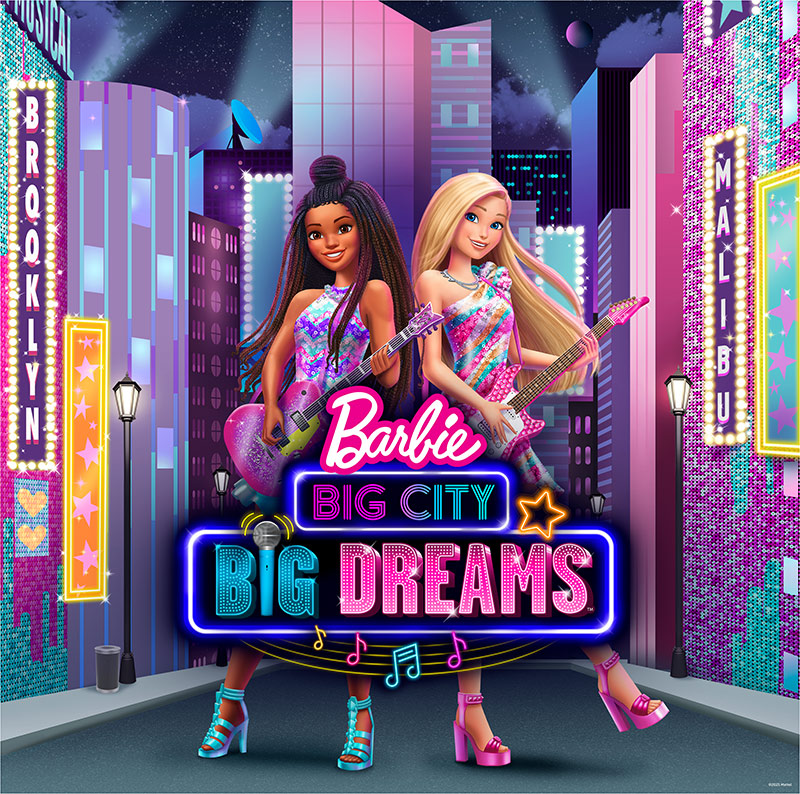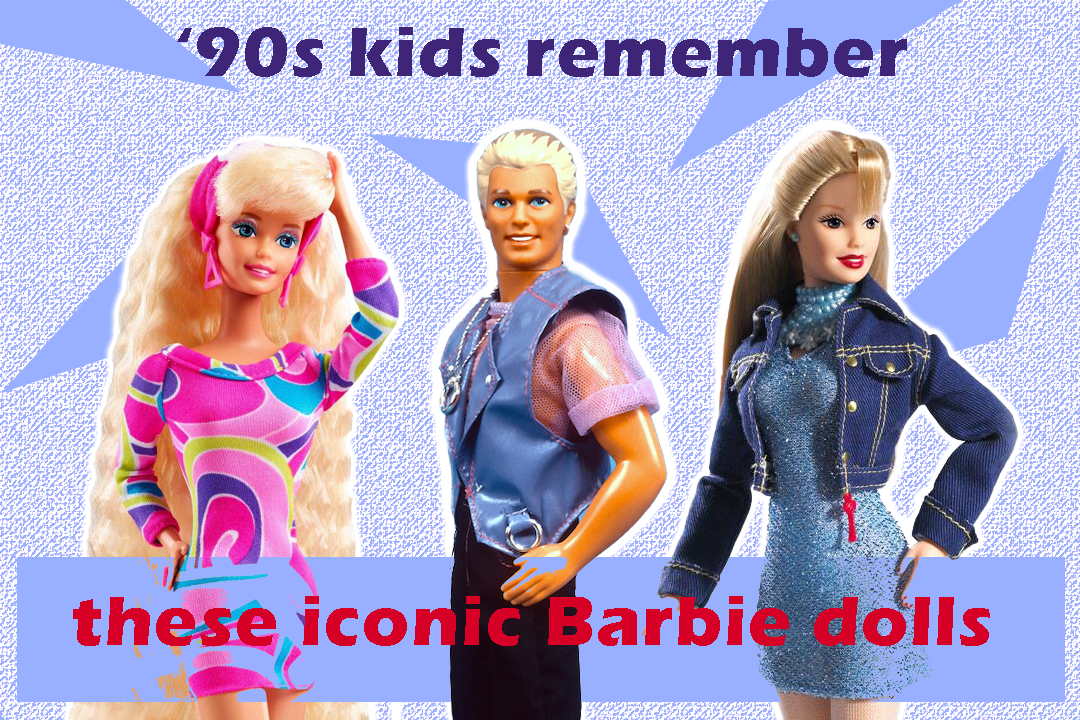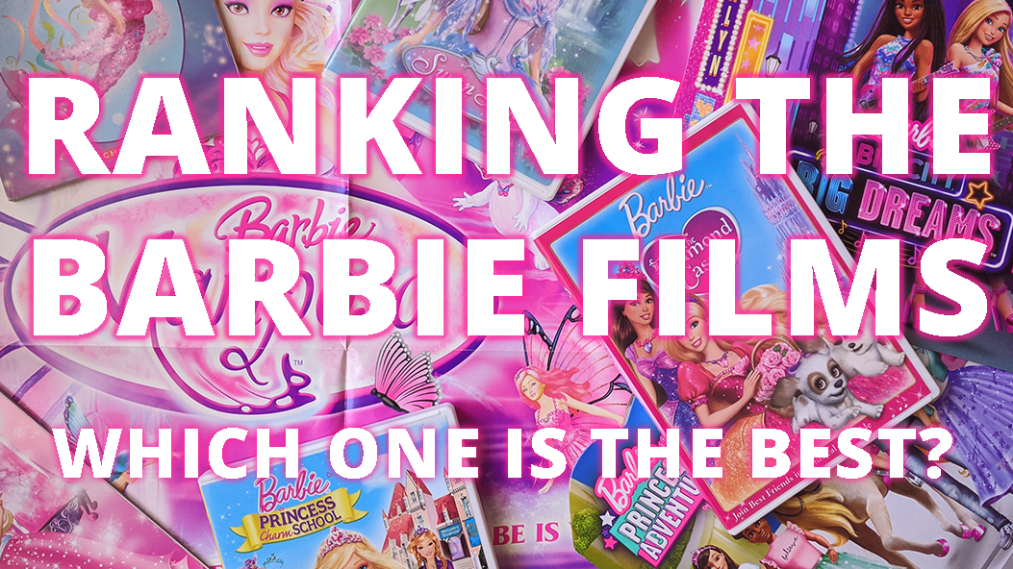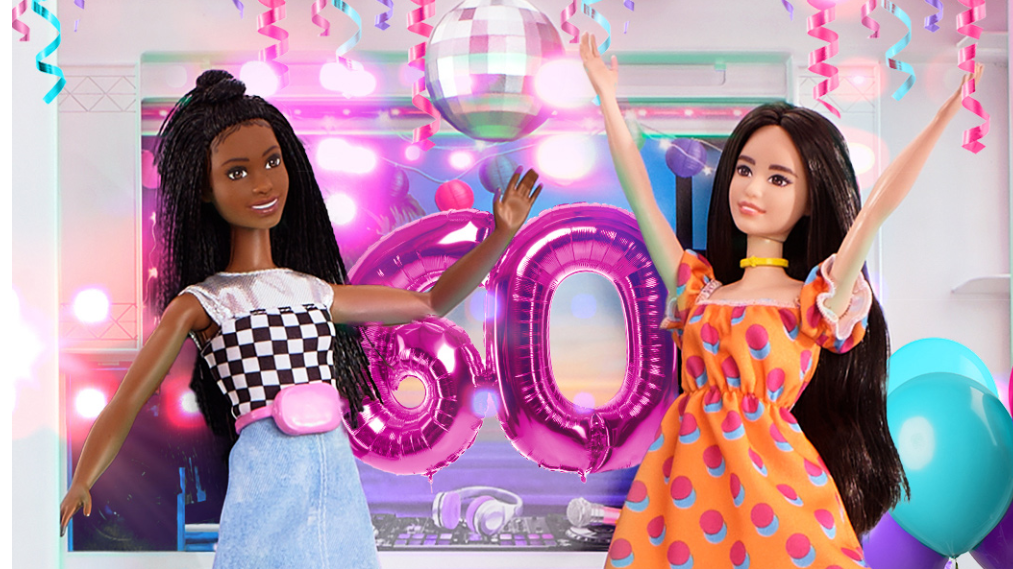Barbie has had many iconic looks over the years, but to vintage Barbie lovers, the dolls from the 1960s are some of the most iconic. Here I’ve gathered a list of the most iconic dolls from Barbie’s first decade.
10. Swirl Ponytail Barbie
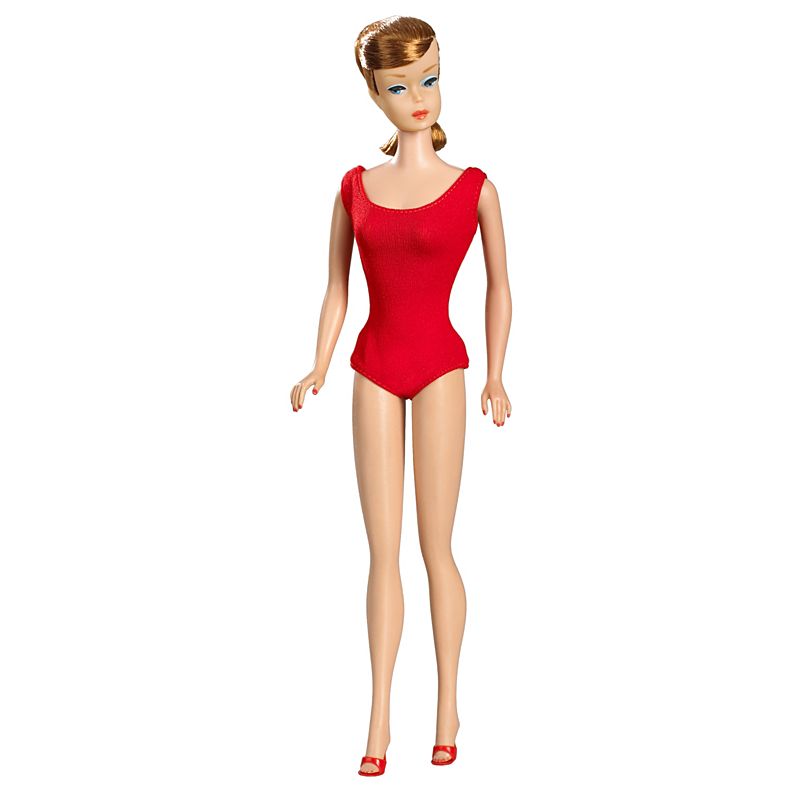
An updated version of the original ponytail doll, the Swirl Ponytail doll was released in 1964. Swirl ponytail dolls came in a variety of hair colors and are popular with collectors. They were only produced until 1967, making them harder to find than the bubblecut dolls. The swirl ponytail style was designed by Jean Ann Burger as a part of her interview at Mattel for a position as a Barbie doll stylist. (Image: Mattel)
9. Midge
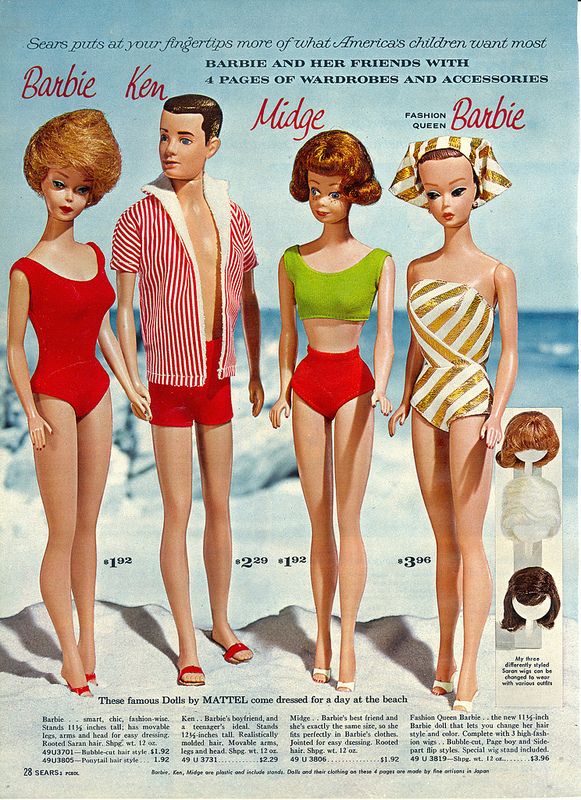
Midge was the first female friend produced for Barbie and was released in 1963, along with Barbie’s sister Skipper, to counteract claims that Barbie was a sex symbol. Midge had a friendlier, freckled face and short hair in a flip style with bangs. Early Midge dolls had painted teeth, and these dolls are now hard to find. Other rare Midge dolls include straight leg Midge dolls without freckles, Japanese “New Midge” dolls, and Midge’s Wig Wardrobe, a set similar to Fashion Queen Barbie, but with just the head and wigs. Midge was available through 1967, then didn’t return until 1988. (Image: Sears Catalog via Pinterest)
8. Bubble Cut Barbie

Bubble Cut Barbie marks the first time Barbie’s “standard look” (ponytail with curly poodle bangs) was changed. This doll has a short bouffant hairstyle and came in a variety of hair colors and face paint styles. She was sold between 1961 and 1967, making her relatively easy to find on the secondary market. The white ginger and brownette hair colors are the most difficult to find. Bubble cut dolls with sidepart styles were released in Europe and Canada only, making them highly desirable to collectors. (Image: Reproduction bubble cut doll from the Sparkling Pink Gift Set, Mattel)
7. Fashion Queen Barbie

Sold with three interchangeable wigs, Fashion Queen Barbie offered children an all-new way to play with their Barbie doll’s hair. Fashion Queen Barbie was very popular with kids and was released in 1963. The gold-and-white striped swimsuit and headscarf alone are iconic, and the fabric was reused in multiple Barbie fashion packs. The swimsuit was also used for regular issue bubblecut and swirl ponytail dolls released in Europe and Canada. (Image: Mattel)
6. Bendable Leg Barbie
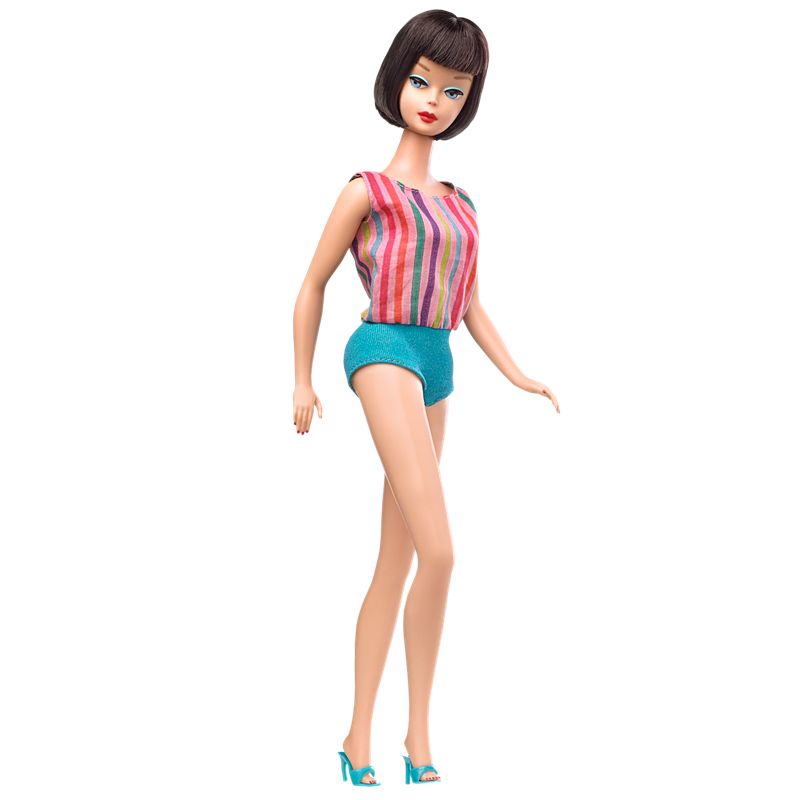
Called “American Girl” Barbie by collectors, this was the second Barbie doll to have bendable legs. (The first, Miss Barbie, who had a hard head with sleep eyes and wigs that could be changed, was not popular with children and subsequently discontinued.) There are many variations in hair color, style, and face paint among American Girl Barbie dolls; dolls came with hair cut in a pageboy style in varying colors with bangs, although some dolls came with longer, fuller hair rooted in a sidepart style. This variant style was designed to accent the elegant evening wear marketed for Barbie at the time, but required much more time to root and were not widely produced. American Girl Barbie dolls produced for the foreign market are also highly desirable. Japanese American Girl Barbie dolls came on pink-toned straight leg bodies instead of the bendable leg bodies, and dolls with swirl ponytail hairstyles and even the Twist ‘n Turn hairstyle/face have been found in Europe. (Image: Reproduction doll, Mattel)
5. Color Magic Barbie

Color Magic Barbie’s gimmick was deceptively simple — by applying a solution, children could change the color of her hair and swimsuit. Although this seems like an easy gimmick to produce, it took Mattel two years to develop the doll. Color Magic dolls were available in two hair colors: Golden Blonde (changes to Scarlet Flame) or Midnight Black (changes to Ruby Red). Most dolls with Midnight Black hair have had their hair color change to red over the years, so dolls who retain the original color are considered highly desirable. Ultra-rare “platinum” Color Magic dolls were reportedly produced as sample dolls for test marketing and have white-blonde hair. (Image: Reproduction Color Magic Barbie doll)
4. Francie
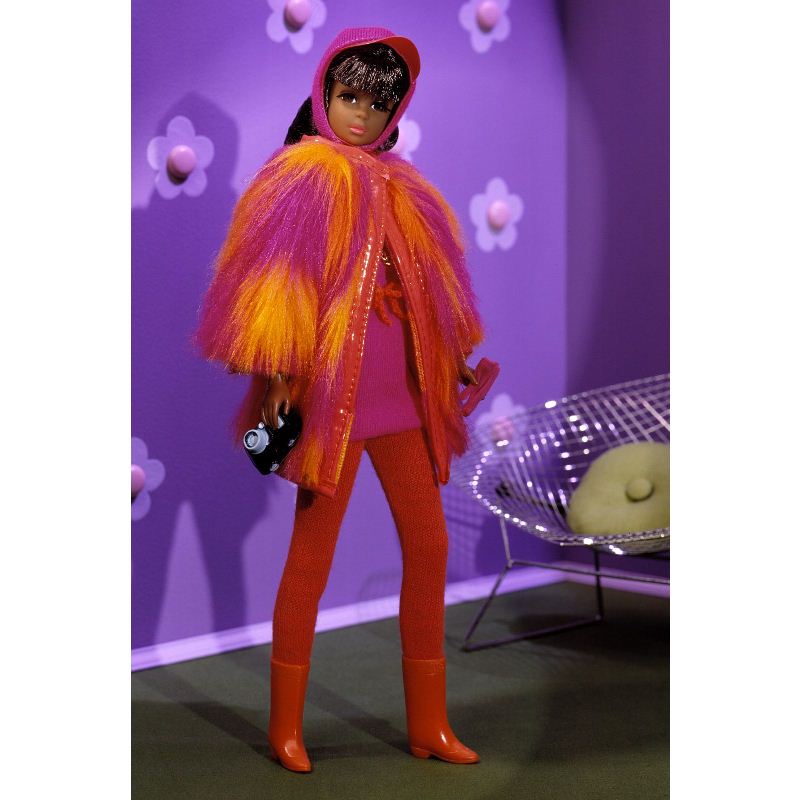
A popular doll with vintage collectors, Francie, introduced in 1966, is Barbie’s younger, “MODern” cousin. The fashion scene in the ‘60s was changing rapidly. Mattel wasn’t sure whether the new “mod” look would last, so Francie was released to test the market. A year later, a redesigned Barbie was released with a new mod wardrobe. Francie stuck around in the Barbie line until 1976, although reproduction and Silkstone Francie dolls have been released since then. (Image: Reproduction Black Francie in "The Wild Bunch," Mattel)
3. Ken
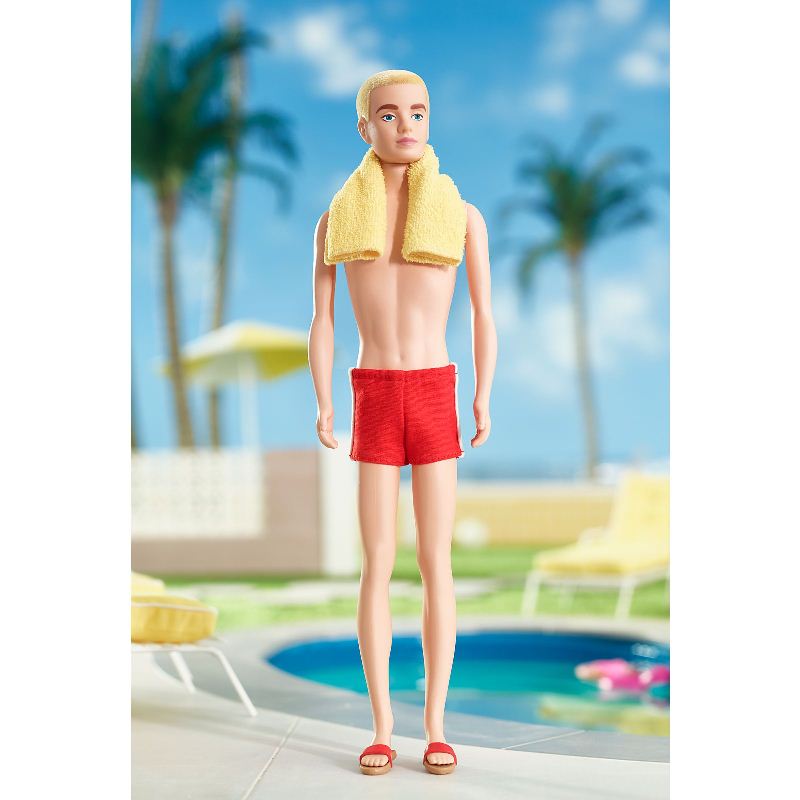
Introduced in 1961, Ken is Barbie’s boyfriend and the first male doll produced in the line. Little girls had been clamoring for a boyfriend for Barbie since her introduction, but Mattel was unsure whether a male doll would sell. The first Ken doll produced had flocked hair in blonde, brunette, or, as a department store special, brown, but the flocking proved to be difficult to apply and would rub off if the doll got wet. Mattel quickly switched over to a painted hairstyle for Ken. Ken has been produced almost continuously since his release in 1961. (Image: Silkstone reproduction doll, Mattel)
2. Twist n' Turn Barbie
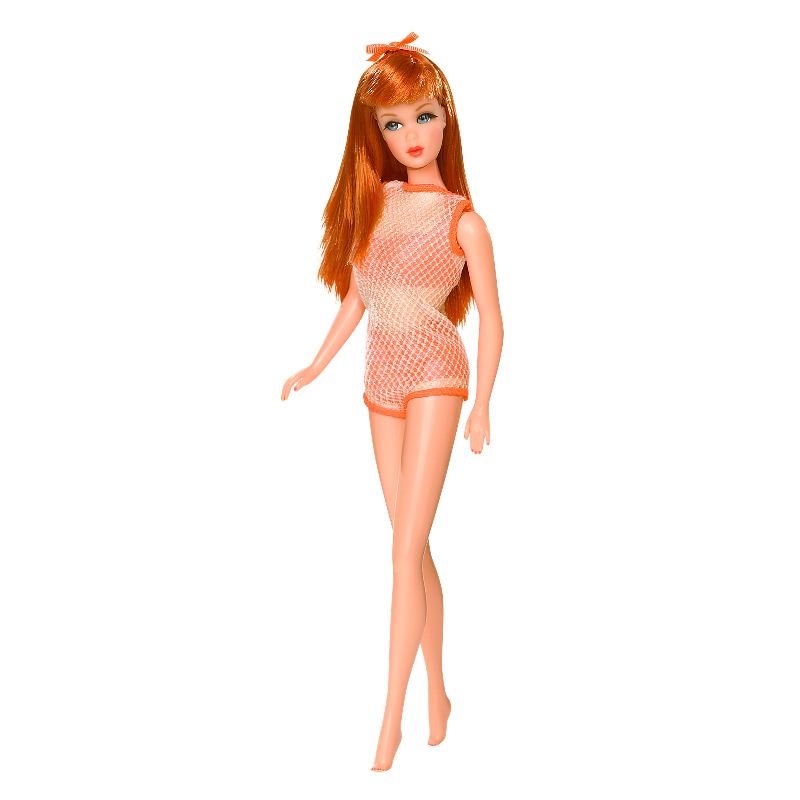
Also referred to as “TNT Barbie,” this doll was the first to use the Twist ‘n Turn body, which allowed Barbie to twist at the waist, allowing for more dynamic posing. The TNT body was used for the majority of Barbie dolls produced through the early 2000s. Barbie also got a new face in this release. She had a more youthful look with her large eyes and rooted eyelashes, pursed lips, and a new hairstyle. TNT dolls came in a range of colors, but redhead TNT dolls are the rarest. The redhead dolls were produced using leftover hair from other dolls, so are much more limited in production than the TNT dolls with standard hair colors. (Image: Reproduction doll, Mattel)
- Ponytail Barbie
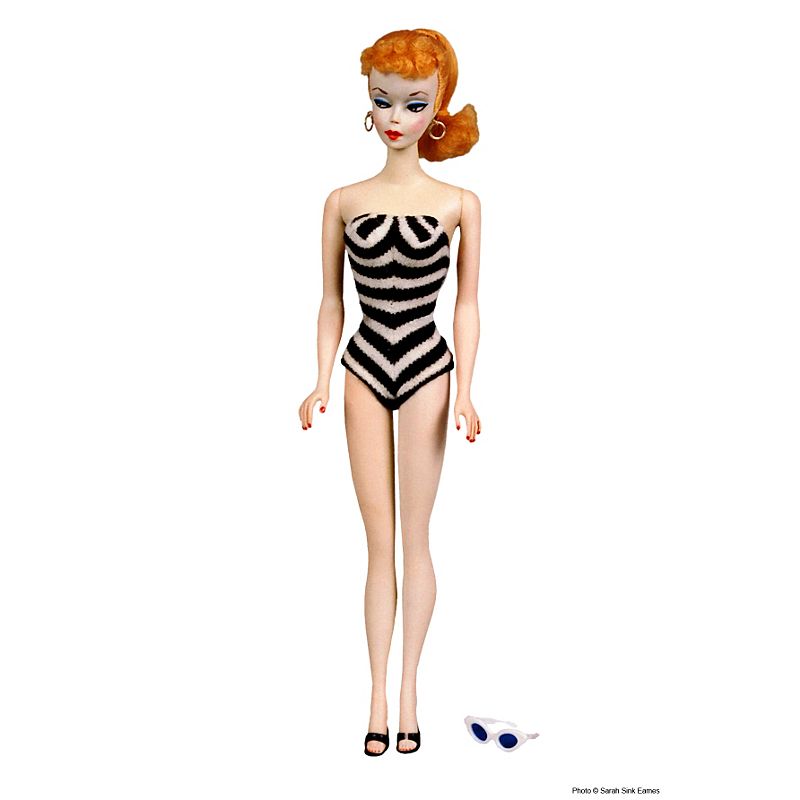
The first style Barbie doll released, the ponytail Barbie is immediately recognizable by her curly poodle bangs. Ponytail Barbie dolls were sold between 1959 and 1964, and the dolls are divided into seven categories based on variations in facial paint, plastic used, markings, and more. No. 1 and No. 2 Ponytails have the highest value on the secondary market, as they were the earliest dolls produced. (Image: Mattel)
Related Product
Related Blogs
Recent Blogs

General
McHALE DESIGN CASE STUDY: MONSTERVERSE- THE LEGEND CONTINUES…

General
Build-A-Bear Celebrates National Teddy Bear Day with Donation to The Toy Foundation™

Industry Commentary, Op-Ed
Toy Foundation Auction is Now Open for Your Bids

Industry Commentary, Op-Ed
Bracelets, Stickers, and Viral Fame: The Story Behind Sky Castle Toys’ Sticki Rolls

Biographies and Interviews
Chrissy Fagerholt: Luck is when Preparation Meets Opportunity!
See more
Recent Wiki

BOOK REVIEWS
Book Review: Storm: Dawn of a Goddess by Tiffany D. Jackson

BOOK REVIEWS
Book Review: Erno Rubik and his Magic Cube by Kerry Aradhya

BOOK REVIEWS
Game Review: Trip Chaser

COMPANIES
Learning Express Toys Hosts 25th Annual Convention & Toy Expo at JW Marriott Tucson

MISCELLANEOUS
Submit Your LA Showroom Details for 2025 Toy Previews
See more
POP's Got Talent

POP Entertainment
Randy Klimpert Shares his Ukulele Collection

POP Entertainment
Steve Casino Peanut Art

POP Entertainment
Everyone's Talking about POP!

POP Entertainment
Princess Etch - a Multi-Talented Etch A Sketch Artist

POP Entertainment
Joseph Herscher of Joseph' s Machines.
See more
Recent POPcast

Hidden Role: The Brains Behind your Favorite Games
Connie Vogelmann designed Apiary & Wyrmspan!

Hidden Role: The Brains Behind your Favorite Games
Bob Fuhrer... Is THE Crocodile Dentist!

Hidden Role: The Brains Behind your Favorite Games
Tom Dusenberry... Bought Atari, Wizards of the Coast, and Avalon Hill!

Hidden Role: The Brains Behind your Favorite Games
Matt Leacock created Pandemic... the game!

Hidden Role: The Brains Behind your Favorite Games
Scott Brown and Tim Swindle... are Launching a New Sport!
See more
POPDuos

POPDuos: Interviews with Legends and Leaders
POPDuo: Richard Dickson, Mattel’s President & COO, and Kedar Narayan, Young Inventor Challenge AMB

POPDuos: Interviews with Legends and Leaders
POPDuo: Will Shortz and Josh Wardle

POPDuos: Legends and Leaders Explore Creativity
POP Duo: Elan Lee, Co-Founder, Exploding Kittens.and Jeff Probst, Host and Exec Producer, Survivor

POPDuos: Legends and Leaders Explore Creativity
POP Duo: David Fuhrer, MNG Director, Blue Sq Innovations & Shawn Green, past Dodgers & Mets MLB Star

POPDuos: Legends and Leaders Explore Creativity
POP Duo: Bob Fuhrer, Founder, Nextoy and Tom Fazio, Golf Course Designer
See more





